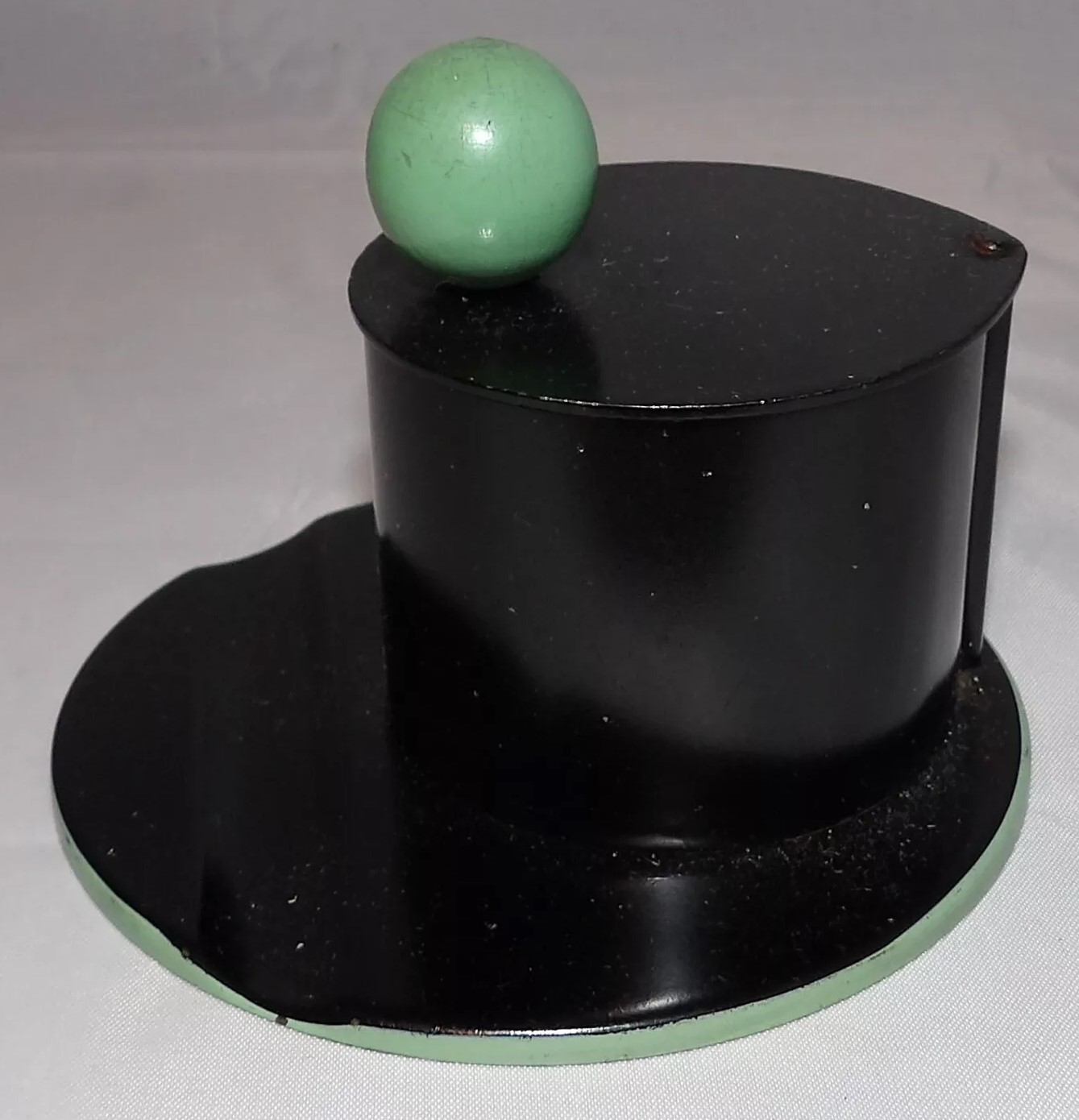
Modernist Industrial Design – Inkwell, Blotter, and Tray
| Categories | Art Deco |
| Material | Metal |
| Markings | See narrative |
| Manufacturer | Ruppelwerk |
| Origin | Germany |
| Date or Era | circa 1930 |
| Measuring | 3 ¾” diameter; 2 ¾” high (inkwell) – Blotter 5 ½” x 2 ¾” |
These sleek desk pieces were designed by the German artist Marianne Brandt for the company Ruppelwerk that was in Gotha. The artist is known for her innovative industrial design and her involvement with Bauhaus. The inkwell is made of black lacquered sheet steel with a ball shaped green knob and a glass insert. The well is of a cylindrical shape and can be opened or closed with a swivel-mounted lid. The lid slides open to either side. The inkwell is stamped with firm’s mark below ‘RUPPEL geschützt’ (protected).
Marianne Brandt (1893-1983)
Marianne Brandt (1893-1983) was a German painter, sculptor and designer. After graduating from Kunsthochschule Weimar she was drawn to Bauhaus in 1924. She studied under László Moholy-Nagy, Josef Albers, Wassily Kandinsky and Paul Klee. In 1926 she became the associate director of the metal workshop. Marianne Brandt has been internationally renowned for her designs of everyday objects such as tea pots, ashtrays, as well as napkin holders and lamps. She is one of the most prominent and renowned Bauhaus artists. After completing her studies, she worked occasionally in the workshop of Walter Gropius. She later became the leading designer of the draft department at Ruppelwerke and modernized their complete product line. In the 1940s and 50s she lectured in applied arts at the Hochschule für Werkkunst in Dresden and at the Kunsthochschule in Weißensee. Her own drafts are produced up to the present day and her early drafts for mass-produced objects are now part of the Museum of Modern Art’s collection in New York. Marianne Brandt and her comprehensive works have left an impressive mark on the development of industrial design of the 20th Century.
Metallwarenfabrik Ruppelwerk GmbH
The metalwork manufacturer Ruppelwerk GmbH located in Gotha, produced Bauhaus designs for a short period. Bauhaus designer Marianne Brandt (1893 – 1983) was responsible for this collaboration. In 1929, the artist and industrial designer was appointed head of the “Entwurfsabteilung Metall- und Massengüter in lackiertem Stahlblech” (Department for drafting metal and mass products with lacquered steel sheet). In addition to designing for production, she was also responsible for the revision of arts-and-crafts objects. Contrary to the strict hierarchies and traditional product lines of the manufactory, Marianne Brandt set new standards. Utility, convenience and reduced forms were consistent with functional Bauhaus design. She reduced the cluttered forms by means of a clever combination of different materials. The combination of glass and matte black lacquer characterized many of the designs Marianne Brandt created for Ruppelwerk.
Sold for $140
Content disclaimer. The information posted is the owner’s best knowledge and may not have been vetted by the SOIC. We welcome comments, corrections, and additions, working to make our website information comprehensive and accurate.
Join the Society of Inkwell Collectors (SOIC) – it’s free!
Founded in 1981 as a non-profit organization,
we are documenting inkwells (and accessories).
We’re here to help and inform!








